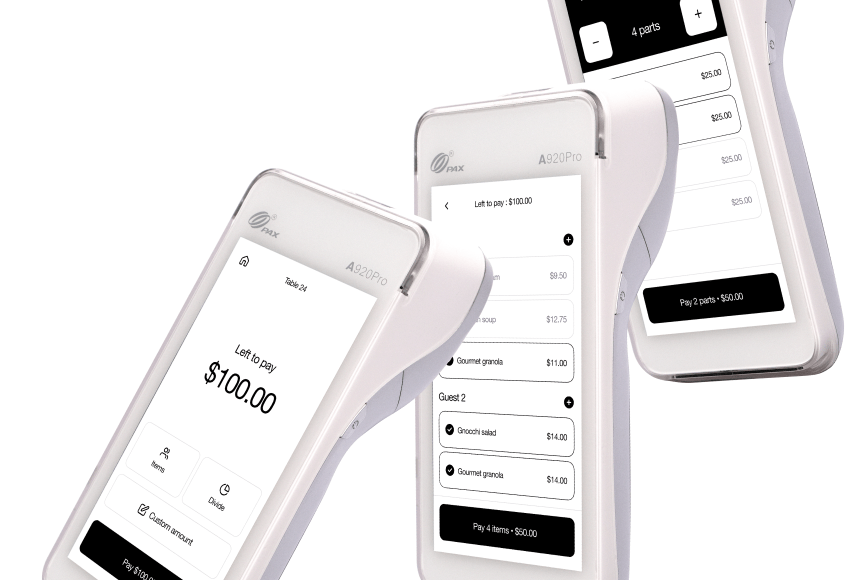
How to Keep Your Restaurant’s Online Prepayments Safe and Simple
Why Securing Online Prepayments Deserves Your Full Attention
Online prepayments aren’t just a trendy add-on for restaurants anymore. They’re quickly becoming an essential service—customers expect to reserve tables, order meals, and settle their bills before they even step inside. But with the convenience of prepayment comes a critical responsibility: safeguarding your diners’ financial data. According to a 2023 report on online payments, cybersecurity threats in digital transactions remain a serious concern for businesses of all sizes.
As a restaurant owner, a data breach can be devastating. Beyond potential financial losses, a breach erodes the trust that keeps your loyal patrons coming back. That’s why it’s crucial to handle online prepayments with care—from the moment a customer clicks “Pay Now” to the second the funds land in your account. In this article, you’ll learn practical steps to secure online prepayments, protect sensitive data, and keep your guests confident in each transaction.
The Risks of Lax Security
Restaurants can be prime targets for cyberattacks—often because their security infrastructure isn’t as robust as larger e-commerce or financial platforms. When you offer prepayment:
- Cybercriminals May Target Payment Gateways: They look for vulnerabilities in checkout pages or outdated security protocols.
- Phishing Scams Increase: Hackers might impersonate your business, sending fake confirmation emails that trick customers into revealing card details.
- Employee Oversight: Without proper training, staff might store or transmit customer credit card numbers in an unprotected way.
A single breach can lead to massive repercussions—fines, negative press, and lost clientele. But the good news is, with the right strategies, you can reduce those risks significantly.
1. Choose a PCI-Compliant Payment Solution
First and foremost, ensure you partner with a platform that meets PCI DSS (Payment Card Industry Data Security Standard) guidelines. PCI compliance might sound like jargon, but it’s essentially a set of rules designed to protect cardholder data during digital transactions. Most reputable online payment processors and restaurant tech solutions follow these standards, but it’s worth confirming before you commit.
Things to ask when evaluating a provider:
- Do They Encrypt Card Data? Payment details should always be encrypted and never stored in plain text on your systems.
- Are They Regularly Audited? Ask how often they conduct security checks. Annual or quarterly audits indicate proactive risk management.
- What Happens if There’s a Breach? Know their protocol for handling a breach or suspected compromise. Speedy incident response can limit the fallout.
A PCI-compliant system not only safeguards you from legal liabilities but also reassures customers that you take their privacy seriously.
2. Implement Strong Access Controls
Even if you use a top-tier payment processor, your internal processes can still pose risks. It’s essential to lock down how your team handles and views transaction data:
- Limit Access: Only employees who genuinely need to see payment details—like a designated manager—should have permission. The fewer eyes on sensitive info, the better.
- Use Role-Based Permissions: If you manage staff via a point-of-sale system, ensure each team member has a unique login with restricted privileges.
- Two-Factor Authentication: This adds an extra layer of security by requiring a code sent to a mobile device or email in addition to a password. If your software offers it, turn it on.
Think of access controls as guarding the back door to your digital “kitchen.” You wouldn’t let just anyone wander into your actual kitchen, so don’t allow casual access to payment data either.
3. Invest in Secure Payment Gateways
A “payment gateway” is the tool that authorizes transactions—essentially the digital equivalent of a card reader. When you collect prepayments through your website or a third-party app, the gateway is what sends the data to the banking networks and returns either approval or decline. But not all gateways offer the same level of protection.
Look for gateways that:
- Tokenize Sensitive Data: Tokenization replaces card numbers with random “tokens” that are meaningless to hackers.
- Perform Fraud Screening: This could be advanced analytics that spot unusual order patterns—like a sudden flurry of large orders from an unfamiliar region.
- Stay Updated with Regulations: Laws around data privacy evolve quickly. A good gateway adapts to new rules, so you’re always compliant.
If you’re integrating a solution like sunday for quick mobile payments, ask if they use advanced gateway protocols. That ensures both convenience and security go hand in hand.
4. Keep Your Website (and System) Updated
Nothing makes a hacker’s job easier than an outdated website plugin or unpatched server software. If your restaurant’s site hosts an online ordering or prepayment page, it’s crucial to stay on top of updates:
- Install Patches Promptly: Many attacks exploit known vulnerabilities that website owners haven’t fixed.
- Maintain SSL Certificates: SSL/TLS encryption ensures data remains protected in transit. Renew certificates before they expire to avoid “Not Secure” warnings.
- Use Firewalls and Antivirus: Even a basic firewall can block suspicious traffic or scripts attempting to infiltrate your site or point-of-sale system.
Basically, treat your online presence like your restaurant’s front door—keep it well-maintained, locked where necessary, and constantly checked for potential break-ins.
5. Train Your Staff on Best Practices
Technology alone can’t fix all security vulnerabilities. Human error is a leading cause of data breaches. That’s why staff education is essential:
- Phishing Awareness: Show employees how to spot suspicious emails or fake invoice links. Hackers often pretend to be vendors or delivery services.
- Secure Handling of Guest Info: If a diner calls to provide card details for a prepayment, staff should never write the info on a loose Post-it or store it in an open spreadsheet.
- Password Policies: Encourage strong, unique passwords for any system access. If they’re reusing passwords from personal accounts, your entire restaurant’s data could be at risk.
A quick, mandatory security refresher every few months keeps best practices fresh in everyone’s mind.
6. Provide Clear Privacy and Refund Policies
Your customers deserve to know how their payment data is stored and protected—and what happens if plans change. A transparent approach builds confidence:
- Publicly Display Your Privacy Policy: Include it on your website’s checkout page. Use plain language—people appreciate skipping legal jargon.
- Explain Data Retention: Clarify whether you keep payment details for future orders or if they’re automatically purged to reduce exposure.
- Refund and Dispute Resolution: Let diners know how to request a refund if an event is canceled or if they change their mind about a pre-order. Quick refunds can quell disputes before they escalate.
You’re not just securing data—you’re also showing empathy and professionalism by answering potential concerns before they arise.
7. Use Secure Communication Channels
Be mindful of how your customers receive receipts or order confirmations. Unencrypted email can be vulnerable if it includes sensitive details:
- Masked Card Numbers: If you send a receipt via email, show only the last 4 digits of a card. There’s no need to include the full number.
- Encrypted Messaging: If you communicate orders through a messaging app, see if it supports end-to-end encryption for added security.
- Secured Online Portals: Let customers log in to a protected account to view order history rather than sending the entire purchase info in a plain email.
Every link in the communication chain should keep personal and payment data secure—just like you’d carefully guard the front-of-house registers.
8. Monitor Transactions and Set Up Alerts
It’s wise to keep an eye on transaction activity. You can:
- Enable Fraud Notifications: Many payment gateways or merchant services let you set custom alerts for suspicious purchases—like unusually large orders or multiple attempts from one IP address.
- Review Daily/Weekly Reports: A quick glance at your dashboard can spot irregular patterns—maybe a sudden spike in online orders from a region you don’t typically serve.
- Set Limits on Certain Transactions: If you rarely sell more than \$200 in a single online order, you can flag or hold any larger amounts for manual review.
Combining these safeguards ensures you catch problems early—before fraudsters can do real damage.
9. Conduct Regular Security Audits
Restaurants conduct food safety inspections for a reason. Similarly, you need periodic security audits to stay on top of evolving threats. Consider:
- Hiring a Cybersecurity Expert: Even a one-time consultation can reveal hidden weaknesses in your system.
- Penetration Testing: Ethical hackers attempt to breach your site or POS, exposing vulnerabilities you can then fix.
- Frequent Software Checks: Check for abandoned plug-ins or scripts left behind from old promotions or vendors. Clean them out if they’re no longer supported or necessary.
Treat it like an ongoing process rather than a one-and-done approach. Technology changes, and hackers get more creative by the day.
10. Offer Guests Simple Ways to Verify Authenticity
A crucial but often overlooked step: help diners confirm they’re dealing with your legitimate site or links. You can:
- Use Custom Domain Names: If your site is “myrestaurant.com,” your ordering page or payment links should reflect that domain. Guests might mistrust random subdomains or third-party URLs they don’t recognize.
- Explain Official Communication Channels: Let patrons know that you’ll never ask them to send credit card details via direct message on social media. Provide the official site or phone number to handle payments securely.
By guiding customers on how to differentiate your real site from potential fakes, you help protect them from phishing attempts—and boost your own reputation for security.
Beyond Security: Building Customer Confidence
When you secure online prepayments, you’re not just checking a box; you’re building a relationship of trust. Diners relax knowing their funds are safe, which often translates into loyalty and willingness to try new services—like order-ahead brunch or pre-ordered group meals.
A system like sunday can integrate advanced payment security features alongside the convenience of scanning a QR code and settling the bill instantly. It’s about blending user-friendly tech with robust safety nets—an unbeatable combo in a landscape where digital convenience is king.
Wrapping Up: Your Recipe for Safe Prepayments
Protecting online prepayments doesn’t have to be intimidating. With the right practices—PCI-compliant solutions, consistent staff training, and vigilant monitoring—you can create a secure, frictionless experience for your guests. By encrypting data, regularly updating your systems, and being transparent about your policies, you not only reduce the risk of fraud but also position your restaurant as a reliable, forward-thinking establishment.
As digital ordering continues to rise, a solid approach to payment security will become just as vital as quality ingredients in your kitchen. Start small—make sure your payment gateway is airtight and your team is on board. Then build out your security measures step by step, always staying alert to new threats and new solutions. This way, you’ll keep the flavor of convenience while shielding your guests’ financial information from prying eyes.
Ultimately, a well-secured prepayment process means your diners can focus on the meal, not the risk. And that peace of mind? It’s one more ingredient in an unforgettable dining experience—one that keeps them coming back for seconds.
Find out more today
Drop us your details below and we’ll reach out within the next 24h
Get paid in advance in a couple of clicks.
Make groups prepay with a simple payment link and cut down on admin work.



